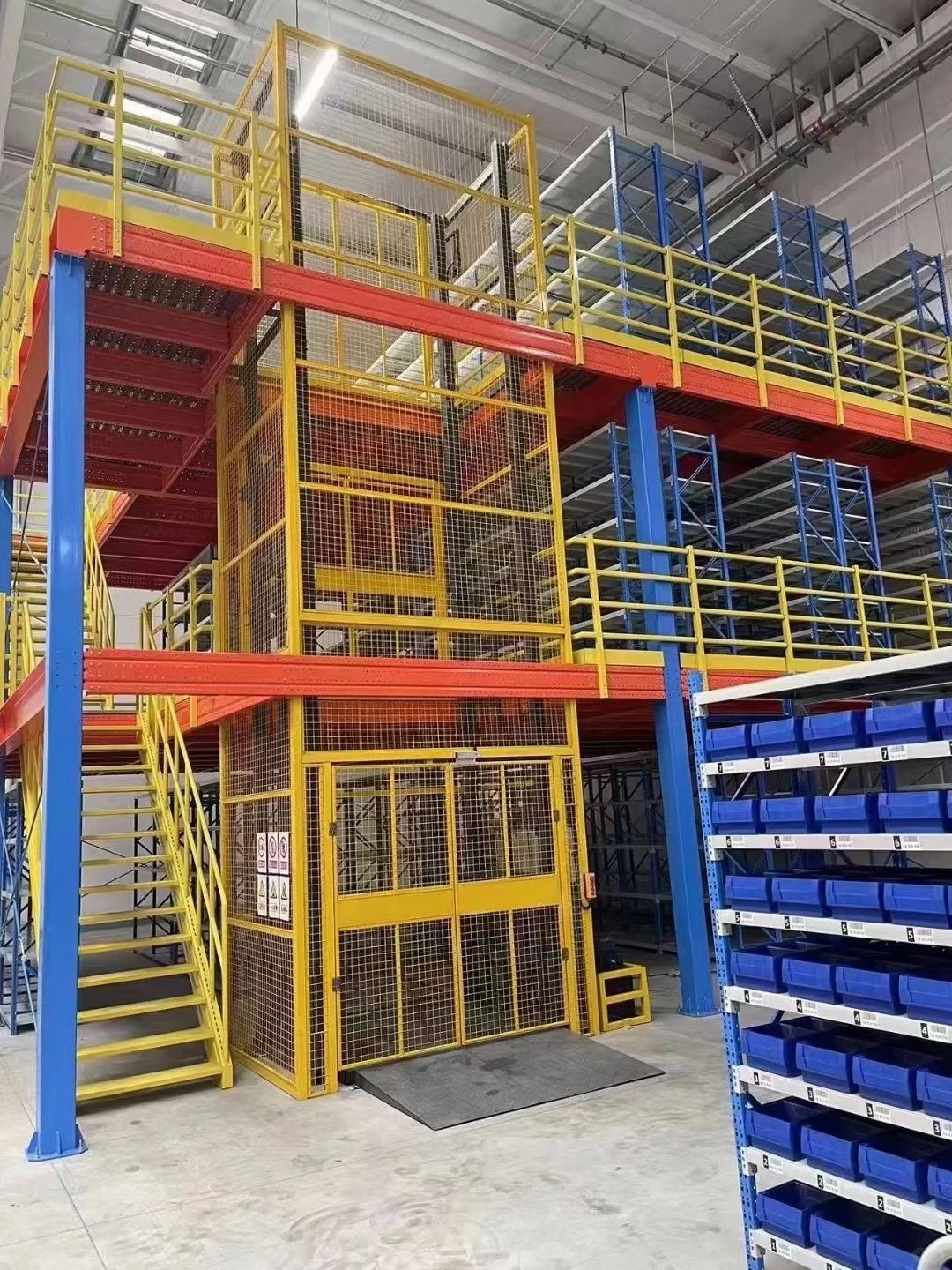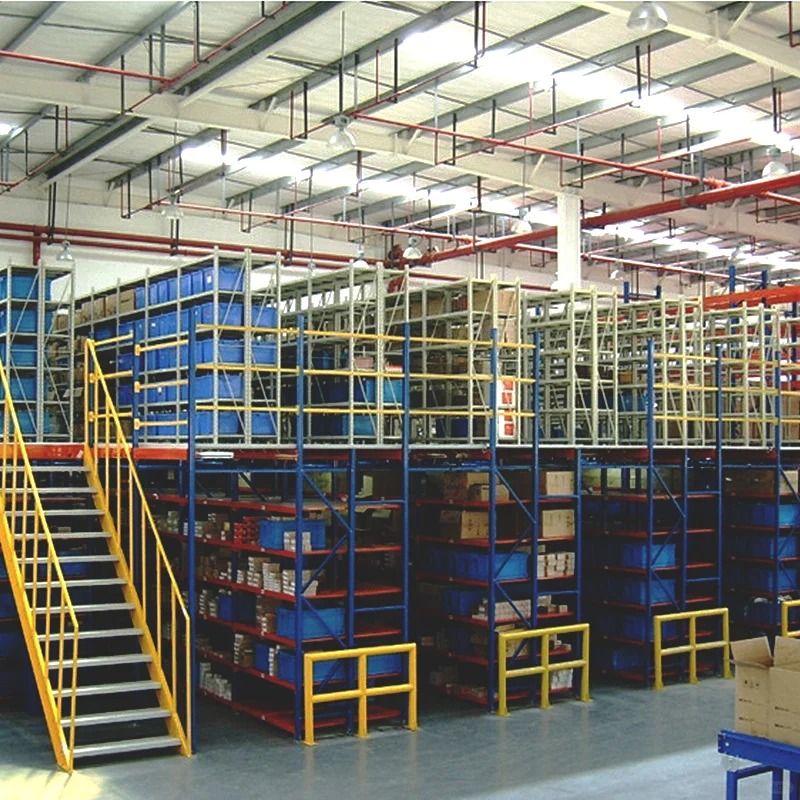In the fast-paced world of logistics, manufacturing, and distribution, efficient storage isn't just an option – it's a fundamental requirement for success. At the heart of most efficient storage solutions lie warehouse shelving racks. These robust structures are the unsung heroes of the supply chain, transforming chaotic storage areas into organized, accessible, and highly productive spaces. Choosing the right warehouse shelving racks is a critical decision impacting everything from inventory accessibility and employee safety to overall operational costs and scalability. This comprehensive guide delves deep into the world of warehouse shelving racks, exploring their various types, undeniable benefits, key selection criteria, essential safety considerations, and vital maintenance practices.

一、Understanding the Core Types of Warehouse Shelving Racks
Not all storage needs are created equal, and thankfully, neither are warehouse shelving racks. Selecting the appropriate type is paramount for optimizing space and workflow. Here’s a breakdown of the most common configurations:
Selective Pallet Racking: This is the undisputed workhorse of warehouses globally. Designed for direct access to every pallet location via forklifts, selective racking offers maximum flexibility. Pallets sit on horizontal load beams adjustable in height increments, allowing storage for various pallet sizes within the same bay. Ideal for high-SKU environments with frequent access to all products. Warehouse shelving racks of this type maximize vertical space while maintaining excellent selectivity.
Drive-In/Drive-Thru Racking: Optimized for high-density storage of large quantities of the same SKU (Stock Keeping Unit). Forklifts drive directly into the rack structure to place or retrieve pallets stored on rails. Drive-In (last-in, first-out - LIFO) has an entrance on one side only, while Drive-Thru (first-in, first-out - FIFO) has entrances on both ends. These warehouse shelving racks sacrifice selectivity for significantly increased storage density but require specialized forklift operation.
Push Back Racking: A popular high-density LIFO system operating on a cart-on-incline principle. Pallets are loaded from the front onto nested carts that ride on inclined rails. When a new pallet is loaded, it pushes the previous pallets back. Retrieval works in reverse – removing the front pallet allows the next one to roll forward. Warehouse shelving racks using push back offer higher density than selective racking while still providing good selectivity within each lane depth (typically 2-5 pallets deep).
Pallet Flow Racking: A high-density FIFO system utilizing gravity. Pallets are loaded onto a slightly inclined track (using wheels or rollers) at the higher end and flow towards the lower end for unloading. Ideal for perishable goods or products with expiration dates requiring strict FIFO rotation. These warehouse shelving racks are highly efficient for large quantities of a limited number of SKUs.
Cantilever Racking: Specifically designed for storing long, bulky, or awkwardly shaped items that don’t fit on standard pallet racks – think lumber, piping, furniture, rolls of carpet, or steel bar stock. Features vertical columns with horizontal arms extending outwards. Loads are placed directly onto the arms. This type of warehouse shelving racks provides unobstructed access along the entire length of the stored items.
Shelving Systems (Industrial/Steel Shelving): While often lighter duty than pallet racking, heavy-duty industrial steel shelving is crucial for storing smaller items, cartons, bins, or non-palletized goods. Units feature multiple adjustable shelves supported by vertical frames. These versatile warehouse shelving racks are perfect for picking areas, mezzanines, tool rooms, and storing smaller components or work-in-progress.
二、The Significant Benefits of Implementing Warehouse Shelving Racks
Investing in the right warehouse shelving racks delivers a cascade of tangible operational advantages:
Maximized Space Utilization: The most obvious benefit. By leveraging vertical cubic space efficiently, warehouse shelving racks dramatically increase storage capacity without expanding the warehouse footprint. High-density systems like drive-in or push back take this even further.
Enhanced Organization and Inventory Control: Clear, designated storage locations for every SKU or pallet type significantly reduce misplacement and errors. This organization is fundamental for accurate inventory counts, cycle counting, and efficient picking processes enabled by well-organized warehouse shelving racks.
Improved Accessibility and Picking Efficiency: Selective racking and well-organized shelving allow direct access to products, minimizing travel time for forklifts and order pickers. Faster access translates directly to increased throughput and shorter order fulfillment cycles. Organized warehouse shelving racks are key to efficient workflows.
Increased Safety: Properly installed and loaded warehouse shelving racks significantly enhance safety. They prevent product collapse, reduce clutter on the floor (minimizing tripping hazards), and provide clear aisles for safe material handling equipment movement. Features like beam locks and column protectors add extra layers of safety to warehouse shelving racks.
Protection of Stored Goods: Keeping products off the floor protects them from potential water damage, dirt, and impact from forklifts. Warehouse shelving racks provide a stable, elevated platform, safeguarding inventory integrity.
Scalability and Flexibility: Most modern warehouse shelving racks systems are modular. You can easily add sections, adjust beam heights, or reconfigure layouts as inventory profiles, volumes, or operational needs change, providing long-term investment value.
Cost Efficiency: While an initial investment, the long-term savings are substantial. Reduced real estate costs (via vertical storage), improved labor efficiency, minimized product damage, and lower inventory shrinkage contribute to a strong ROI for well-chosen warehouse shelving racks.

三、Critical Factors for Selecting the Right Warehouse Shelving Racks
Choosing the optimal warehouse shelving racks system requires careful analysis of several key factors:
Inventory Characteristics:
Unit Load Type & Size: Pallets? Size/weight? Non-palletized? Dimensions? This dictates rack type (pallet racking vs. shelving vs. cantilever) and beam/shelf specifications.
SKU Profile: Number of unique SKUs, quantity per SKU, turnover velocity (fast vs. slow movers). Influences choice between selective (many SKUs) and high-density (few SKUs, high volume) warehouse shelving racks.
Product Handling: FIFO or LIFO requirements? Fragility? Special handling needs?
Weight Capacity: This is non-negotiable. Precisely determine the maximum weight per pallet, shelf level, and overall bay. Warehouse shelving racks must be rated to handle these loads safely, including the weight of the rack itself. Always include a safety factor.
Dimensions: Measure pallet dimensions (length, width, height including overhang) and carton/bin sizes for shelving. This determines beam length, bay depth, shelf size, and vertical beam spacing (upright height and beam level adjustments). Ensure adequate clearances for forklift operation and product placement/removal within the warehouse shelving racks.
Forklift/Access Equipment: The type and capabilities of your forklifts (reach trucks, counterbalance, narrow aisle) dictate aisle width requirements and thus influence racking density. The lift height capacity also determines maximum usable height for your warehouse shelving racks.
Building Constraints:
Clear Ceiling Height: Dictates the maximum potential height of your warehouse shelving racks.
Floor Load Capacity: Must support the combined weight of the loaded racks and material handling equipment.
Column Spacing & Obstructions: Existing building columns, doors, sprinklers, and HVAC can impact rack layout and height.
Budget: Consider both the initial purchase/installation cost and the long-term operational cost savings (space, labor). Balance the need for capacity and features with financial constraints. Different types of warehouse shelving racks have varying price points.
Future Growth: Plan for scalability. Choose modular warehouse shelving racks systems that can be easily expanded or reconfigured as business needs evolve.
四、Essential Safety Considerations for Warehouse Shelving Racks
Safety is paramount when dealing with heavy loads stored at height. Neglecting safety protocols for warehouse shelving racks can lead to catastrophic accidents. Key considerations include:
Professional Design and Installation: Warehouse shelving racks must be designed by qualified engineers and installed strictly according to manufacturer specifications and local building codes. Never attempt DIY installation for structural racking.
Load Capacity Compliance: Never exceed the rated load capacities (per shelf, per beam level, per bay) clearly specified for the warehouse shelving racks. This includes uniform distributed loads and point loads. Post load capacity signs visibly on each bay.
Proper Loading Practices: Ensure pallets are intact and goods are properly stacked and secured. Loads should be centered on pallets, and pallets centered on rack beams or shelves. Avoid overhang unless the rack is specifically designed for it. Use pallets compatible with the warehouse shelving racks.
Damage Inspection and Reporting: Implement a rigorous, documented inspection program. Train staff to immediately report any damage to uprights, beams, braces, connectors, or safety accessories (like beam locks or column guards). Damaged components in warehouse shelving racks must be unloaded immediately and replaced before reuse. Never attempt field repairs on structural components.
Aisle Integrity: Maintain clear, designated aisles. Never store materials in aisles. Ensure aisles are wide enough for safe equipment operation, including turning radii.
Forklift Operator Training: Only trained and certified operators should handle materials near warehouse shelving racks. Emphasize careful maneuvering to avoid impacts, which are a primary cause of rack damage.
Safety Accessories: Utilize recommended safety features:
Beam Locks/Clips: Secure beams to uprights, preventing accidental dislodgement.
Column Protectors/Guards: Shield uprights from forklift impacts.
Pallet Supports/Wire Decking: Prevent pallets or products from falling through beams (especially important for small or unstable items). Decking also provides a surface for non-palletized goods on pallet racks.
End-of-Aisle Guards: Protect rack ends from collisions.
Upright Base Plates & Anchors: Ensure racks are securely bolted to the floor according to specifications.
五、Vital Maintenance Practices for Warehouse Shelving Racks
Proactive maintenance is crucial for ensuring the longevity, safety, and optimal performance of warehouse shelving racks:
Scheduled Inspections:
Daily/Operator Checks: Encourage operators to visually scan for obvious damage as they work.
Formal Periodic Inspections: Conduct comprehensive documented inspections by trained personnel (internal or external) at least annually, or more frequently in high-traffic/high-impact risk areas. Follow a detailed checklist covering all critical components of the warehouse shelving racks.
Post-Impact Inspections: Any time a rack is struck by equipment, even if damage isn't immediately obvious, the affected area must be thoroughly inspected by a qualified person before reloading.
Immediate Damage Management: Establish a clear protocol for reporting and addressing damage. Damaged components must be unloaded immediately. Replacement parts must be obtained from the original rack manufacturer or certified suppliers – never mix incompatible components or attempt unapproved repairs on structural parts of warehouse shelving racks.
Load Audits: Periodically verify that loads stored on the warehouse shelving racks still conform to the original design weights and configurations. Reorganize if inventory profiles have significantly changed.
Cleaning and Housekeeping: Keep the racks and surrounding areas clean. Remove debris, spills, and dust buildup. Good housekeeping improves safety and makes damage easier to spot. Ensure adequate lighting throughout the storage area housing the warehouse shelving racks.
Anchorage Checks: Periodically verify that anchor bolts are tight and secure, especially after seismic events or if floor conditions change. Proper anchorage is fundamental to the stability of warehouse shelving racks.
Warehouse shelving racks are far more than simple metal structures; they are the foundational framework for efficient, safe, and profitable warehouse operations. From the versatile selective pallet rack to the high-density drive-in system and the specialized cantilever, understanding the types available is the first step. Recognizing the significant benefits – maximizing space, boosting organization, improving safety, and reducing costs – underscores their value. However, reaping these benefits requires meticulous selection based on inventory, weight, dimensions, equipment, and building constraints. Crucially, safety must be the unwavering priority, enforced through professional installation, strict adherence to load capacities, diligent inspections, and proper maintenance protocols.
Investing time and resources into selecting, installing, and maintaining the right warehouse shelving racks system is an investment in the operational backbone of your business. By following the principles outlined in this guide, you can transform your warehouse into a model of efficiency, safety, and scalability, ready to meet the demands of today's competitive supply chain landscape. Your warehouse shelving racks are not just storage; they are a strategic asset.







